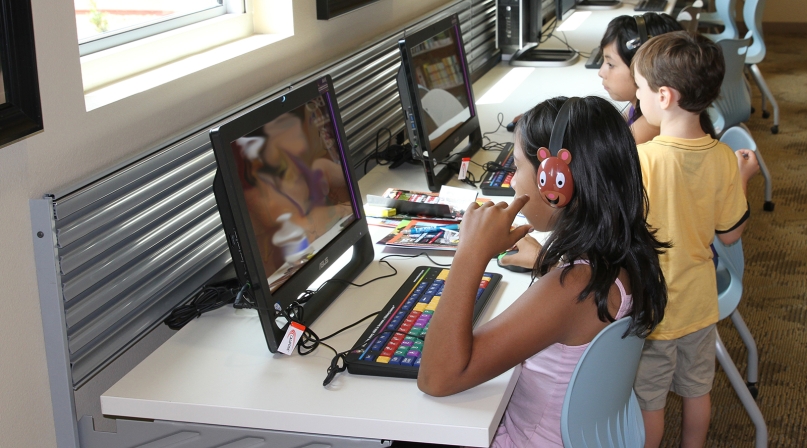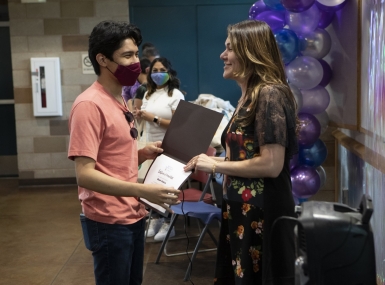Problem:
|
County residents who are unable to visit a physical library branch can’t access library resources.
|
Solution:
|
Create a program for all residents to have online access to materials.
|
The San Bernardino County library system has found an innovative way to better serve all of its members both at the checkout counter and with the click of a mouse.
Library administrators launched an electronic “e-content” library card program in 2016. It provides county residents who are unable to visit a physical branch of the library the option to sign up for a digital library card and access over 250,000 items online.
The program allows library patrons to access a wide variety of electronic materials including e-books, audio books, magazines, music, videos, documentaries, comic books, scholarly journals, news databases and the most recent national and local newspapers. Users have access to a database of over 11 million songs in addition to five free downloads per week and five free hours of streaming per week.
San Bernardino County is the largest county in the continental United States and the 32-branch library system serves individuals throughout 20,000 square miles. County Librarian Michael Jimenez explained that it takes him more than three hours to drive from the library’s administration office to one of the physical branches.
“It’s a lot of ground to cover and for any given reason, whether it be economic reasons, or they can’t find the transportation to get to our facilities … we wanted to give an opportunity for those folks to still have access to at least our online collection,” Jimenez said.
Before the program, an individual would have to visit a physical branch to get a library card in order to access the online content. Jimenez said this defeated the purpose of having digital materials that can be remotely accessed.
“We wanted to just be able to give the ability for folks to get a library card without having to actually come to a physical library,” he explained.
Before the program launched, the county library’s e-content circulation was 226,000 per year. For the upcoming year, the library is projecting to have a circulation of 545,000 for digital content items. The program’s goal is to reach 1 million circulations of e-content each year.
“My thought is with as much content as we have, with as much variety of items that we have within our digital media, we can easily if not meet but surpass what our largest facility does,” Jimenez said.
The creation of the e-content library card program was a collaborative effort from the library’s management team. The library’s IT staff developed an online application that users complete to receive a digital library card. When an application is submitted, the administration office receives an email, creates an account for the user and then emails the individual their new digital library card number. The program didn’t cost the county any additional funding.
“We take really seriously the fact that we don’t have a lot of resources and we have to try to do the best with what we got,” Jimenez said. “We’re always looking at just creative ways to come up with things.”
With the creation of the program, over 8,700 digital library cards have been registered and 5,000 of those cards belong to students. The program has worked to expand the county library’s partnership with school districts. Specifically, a major benefit of the digital library card for students is it does not have a financial component if a book is returned late, Jimenez said.
“With a digital card you don’t have that [late fee], so it kind of breaks down some of those economic barriers as well,” he said.
The program is able to issue digital library cards to an entire school of hundreds or thousands of students within several minutes. Teachers may request the digital cards for students and the library emails digital codes for everyone in the class to access the database of resources.
Andrew Mills, a San Bernardino County librarian and the collection development lead for the county, works to add new materials to the online system on a monthly basis.
“Since we have such a large community, we have people from all different walks of life, all different financial capabilities and backgrounds. Just being able to offer as much different material as we can allows us to really service as many different patrons and as many different demographics as we possibly can,” he said.
For example, Mills explained that audiobooks are very popular because a large portion of the county’s population regularly commutes.
“This supports the lifestyle that is very prevalent nowadays and feels like a modern option as opposed to what can feel a little bit archaic in the brick and mortar physical branches,” he said.





